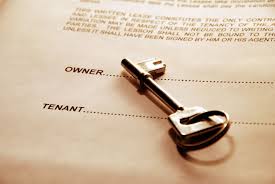We’ve all heard the horror stories of tenants who destroy property or fail to pay rent. A bad tenant can be a nightmare for any landlord, as well as both emotionally and financially draining.
Fortunately, there are many steps that landlords can take to avoid being put in such situations. With the right tenant screening processes in place, landlords can detect the bad tenants before it’s too late.
As a landlord, your job is to verify the legitimacy of the information a tenant has provided to you through their rental application and supporting documents. You’re looking for anything that might be suspicious or doesn’t support the claims made by the tenant through their paperwork. If you find one red flag, it’s probably a good idea to pass on the tenant altogether.
These 10 tips will help you conduct a tenant background check with total confidence.
1. Ask the right questions
Asking the right questions is the first and most essential step to a great tenant background check. Before you meet tenants face-to-face, you will likely talk to them over the phone. This is your opportunity to prequalify them.
There is no point in showing your rental property to someone that is not the right candidate. For example, if a tenant is looking to move into a place immediately and your rental unit is not available for another two months, it would be a good idea to uncover that over the phone before you waste more of each other’s time. This is where asking the right questions can help you ensure the best tenant screening possible.
It’s also important to not assume anything about a tenant from the way they come across over the phone. Remain objective while asking your questions. It’s always helpful to be genuinely curious about a prospective tenant while simultaneously looking out for any inconsistencies.
8 Questions to ask during a tenant background check
- When do you need a place by?
- Have you given notice to your existing landlord?
- How is your job?
- How is your credit report?
- What is your maximum budget?
- How many bedrooms do you need?
- Do you have pets?
Who else will be living with you?
2. Get them talking
How one ends a relationship tells you a lot about them. That’s why it’s a good idea for a landlord to get a prospective tenant to talk about his current or previous landlord. If a tenant left the relationship on a bitter note, it is helpful to know what happened. You can bait a tenant into opening up about their current situation by saying the following: “I know a lot of landlords can be difficult to deal with. How has your experience been with your current landlord?”
If you happen to uncover a prospective tenant that is suing his current landlord, don’t risk taking that person on as a tenant. You could be the next landlord they go after.
As a landlord, you cannot rely on the paperwork alone to carry out a tenant background search. You have to be creative and willing to engage with tenants on a personal level. Conversations can help you better understand the way your tenants relate to others and how they handle conflict, all of which are essential to achieve the best tenant screening.
3. Look for troubling signs
As part of due diligence, it’s important to look out for any suspicious signs. A lot of landlords mistakenly think that a tenant background screening is just about checking landlord and employment references. Though that is an integral part of the process, a good landlord will also do some extra detective work.
Professional tenants are people who make a living from deceiving landlords. They know how to lie about their identities to get their rental application approved. Once they move into rental properties, they don’t pay the rent and disappear before landlords can ever take them to court. These are the worst tenants you can possibly have and it’s important to watch for any telltale signs.
Here are two signs you should be watching out for during a tenant background check:
If a tenant acts really excited and wants the property right away, you should be cautious. Good tenants begin searching for a rental property at least four to eight weeks before they need one. That is why it’s important to ask yourself why this tenant is so desperate. Could it be that the tenant’s application has been rejected by everyone else? Or does the tenant suspect you are so desperate to find someone that you will overlook serious problems with their application?
Either way, you need to be cautious.There could be legitimate reasons for why a tenant might need the place right away. Perhaps you’re dealing with a new immigrant or someone with an immediate job transfer. Regardless, it’s your job to verify the facts to your satisfaction.
There is the old saying: “If it sounds too good to be true, it probably is.” This applies especially for tenant background checks. When a tenant starts telling you a bunch of things that you want to hear, you should be suspicious of them. For example, if they insist on taking care of certain renovations for you or tell you stories about how they helped their landlord fix things around the home for free.
Though these may be true stories, you need to verify these facts as best you can. For example, when talking to the landlord ask them about the stories your tenant told you. Be as specific as you can about the details in case the landlord reference is phony as well.
4. Confirm their identity online
The internet is a helpful tool for carrying out a tenant background search. You can use large search engines, such as Google, Yahoo or Internet Explorer, to verify the identity of a prospective tenant. Simply type in their names and see what comes up.
While searching online, it’s important that you cross-reference everything you come across with the rental application and supporting documents provided by the tenant. Is the employer they claim to be working for online the same as the one that appears on their rental application and letter of employment? Does the online photograph match the identity of the tenant you met in person?
It is also important to check for any past criminal or fraudulent activity associated with their names. Social media platforms are helpful in getting to know the tenants as well. Check their profiles on Facebook, LinkedIn, Twitter and Google+.
5. Never use the employer contact number provided
How do you know whether the phone number listed on a rental application is legitimate? It’s easy for any tenant to have a friend pretend to be their employer over the phone. To avoid being duped like this, you need to research the company’s phone number online. This should be a regular practice for any tenant background screening. Never make a call using the phone number provided on the application. Most companies can be found on the Internet. If you can’t find the company listed anywhere, you should be suspicious.
If you’re able to find the number online, call the company’s operator and ask to speak to the tenant. If the operator can’t find the tenant’s name listed, this may be an indication that he or she is lying about their employment status.
6. Verify the landlord’s name using proper channels
How do you know whether the current or previous landlord’s names and phone numbers listed on the rental application are valid? A tenant background check is only as reliable as the information provided. That’s why it’s important to verify the landlord’s identity.
A good way to do this is to get your Realtor or lawyer to conduct a land registry check on the addresses belonging to the tenant’s current and previous landlords. If the names provided match with those listed on land registry, the tenant has been honest and forthcoming about this information.
7. Confirm the current rental period
When tenants lie about their current landlord reference, they also lie about the time period in which they rented their current home. A robust tenant background screening will attempt to detect deception on multiple levels so as to lessen the probability of approving a bad tenant.
If a prospective tenant is currently living in a rental home that was leased out through the help of a real estate brokerage, a record of them leasing out this home will exist on a centralized MLS system. As such, you can request that your Realtor check all previous records related to the tenant’s current address. If the property was rented or sold in the past, your job is to cross-reference the dates to see if they match up with the date the tenant claims to have moved in. Any discrepancies with respect to dates will indicate that the tenant is lying to you.
8. Ensure affordability
Affordability is a critical element in tenant background screening. How do you know whether a tenant can afford to rent from you? You have to consider how much they earn with respect to the rent owing, their current liabilities and their spending habits as reflected by their credit report.
If the rental property exists in a city where the cost of living is high, you need to take this into account when assessing affordability. For example, two-bedroom Mississauga condos typically rent for an average of $1,700, plus a hydro bill that can range from $30 to $80 depending on usage. In this region, the cost of living is moderate and landlords can typically feel comfortable if the tenant’s rent is less than 40% of their after-tax income. Every city will have its own rule of thumb with respect to an acceptable rent-vs-income ratio.
Since it’s very easy for tenants to submit fake letters of employment, it’s a good practice to ask for their three most recent paystubs. Paystubs are more difficult to duplicate. Making them a requirement helps lessen your chances of being a victim of tenant fraud.
9. Pull your own report
In my many years of being a Realtor and real estate investor, I have come across my share of fake credit reports. That is why I always advise landlords to pull a second credit report on any tenants they are seriously considering. This should be a standard protocol with respect to any tenant background check.
Before you approve a tenant, you should get a third party to pull a credit report for you. Do not rely entirely on a credit report you received from a prospective tenant. It’s okay to use that as an initial reference. However, once you’re about to make decision in favour of a tenant, it’s important to pull their credit report to see if it matches the one provided. If it does, you can rest at peace knowing that the tenant has passed the best tenant screening processes one could possibly implement.
10. Verify photo identity
Now that you’ve approved the tenant, it’s time to make it all official through the signing of the lease itself. When you meet the tenant in person for this final paperwork, it’s very important that you request photo identification before signing any documents.
This is the final step to the tenant background check process, as it helps validate whether the identity you used to approve the application is belonging to the person standing in front of you.
It’s impossible to protect yourself entirely from the possibility of assuming a bad tenant. This risk comes with being in the business of renting out residential homes. Nonetheless, the 10 tips provided here will help you administer the best tenant background screening possible. I can guarantee this from my own experience as a successful landlord.










 Maziar Moini, Broker of Record - Home Leader Realty Inc.
300 Richmond St. W., #300, Toronto, ON M5V-1X2
Maziar Moini, Broker of Record - Home Leader Realty Inc.
300 Richmond St. W., #300, Toronto, ON M5V-1X2



